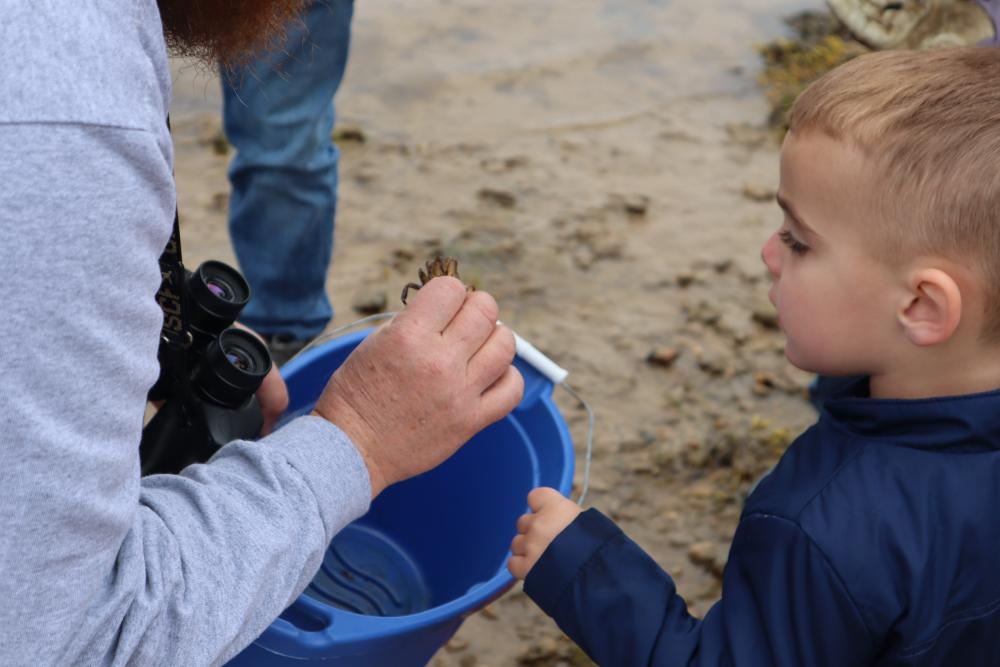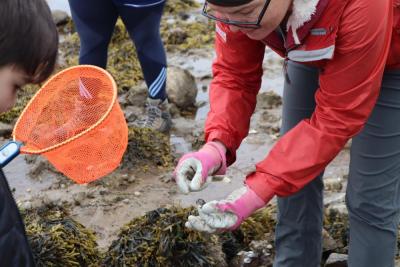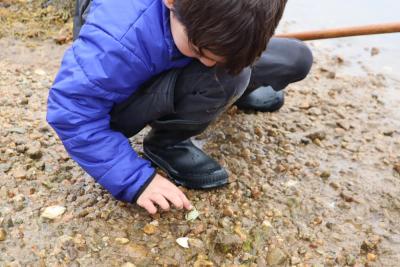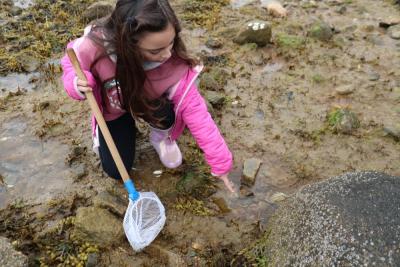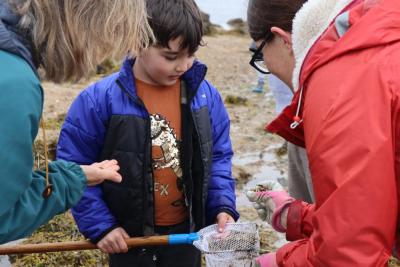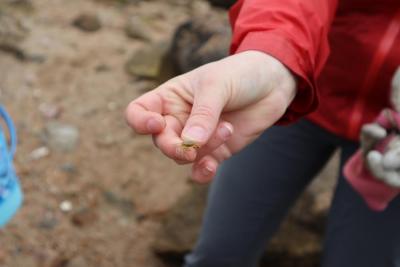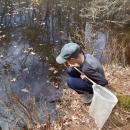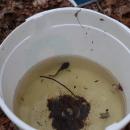Tri-Town residents discover crawling critters in temporary habitats
Whether it was marshy vernal pools or salty tide pools, Tri-Town residents explored water habitats looking for unique creatures on Saturday, April 15 and Sunday, April 16.
Tristan Delacampa, 11, searched high and low for anything squirming during the annual vernal pool walk at Tinkhamtown Woodlands.
Delacampa gasped when he saw a tail move in the water. “It’s a tadpole,” he said.
According to Mattapoisett Lands Trust Treasurer Gary Johnson, vernal pools are seasonal water filled depressions located in wooded areas that serve as breeding habitats for a variety of animals including salamanders and frogs.
“There are specific amphibians that have this hatching habitat for their eggs,” Johnson explained.
Among the animals are yellow spotted salamanders, blue spotted salamanders and wood frogs.
“This has been an odd winter,” said Johnson. According to Johnson, vernal pools form in the spring after snow and rain seep into the ground during the winter months and dry up later in the season.
The dry winter has resulted in a shallower pool according to Johnson. He said that normally the vernal pool is approximately eight feet deep but he estimates that this year it is a foot lower than average.
“I am a little worried about climate change,” Johnson said, referring to the vernal pool’s water levels.
Johnson explained that wood frogs freeze in the winter to hibernate, but since the weather has been warmer than previous years the wood frogs are not in a dormant state and are searching for food too early in the season.
“It is important the [vernal pools] stay here so life can happen here,” said Delacampa.
According to Sippican Lands Trust member Carolyn Tepolt, both vernal and tide pools are temporary habitats, but unlike the annual schedule of vernal pools, tide pools are “on the tide’s schedule.”
According to Tepolt, tide pools are shallow pools of seawater that form on shores and provide temporary habitats for a variety of animals including jellyfish, crabs, snails, barnacles and more.
“It is a special kind of environment because it is underwater sometimes and then other times it is exposed,” she said.
Eight-year-old Arianna Arsenault ran along the shore of Brainard Marsh bucket and net in hand with her brother Axton during the Sippican Lands Trust second Tide pool exploration.
“That is the biggest jelly I have ever seen,” said Arianna to Axton’s discovery of a jellyfish washed up on shore.
Despite jellyfish being food for her favorite animal, the sea turtle, Arianna said that jellyfish are her second favorite sea animal.
Axton was able to fill a bucket with all the sea creatures he found including a large sea snail and a Polychaeta- a segmented sea worm.
“My favorite was the green crabs,” said Axton. According to Tepolt, the European green crab is an invasive species in Marion.
“But that doesn’t make them less interesting,” she said.



